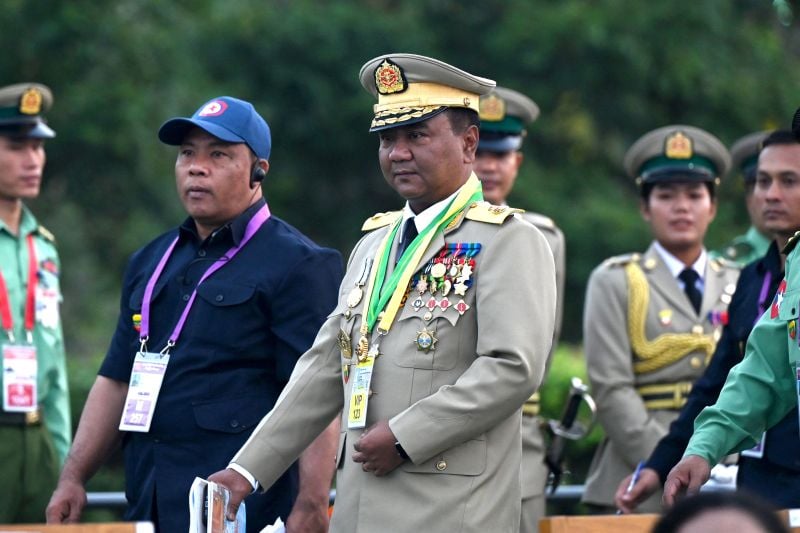Myanmar soldiers arrive at Buthidaung (Photo by AFP)
Mizzima Editorial
The Myanmar military is in a race against time at the height of the hot season.
The forces under Operation Aung Zeya are currently conducting raids in Kawkareik, Kyainseikgyi, and Toekawkoe, deploying three large columns comprising over 3,000 soldiers, with armour, artillery and air power, bearing down on Myawaddy Township. These forces have advanced from Hpa-an, Mawlamyine, Thanbyuzayat, and Ye towns.
At the height of the hot season, Operation Aung Zeya seeks to regain territory from the Karen National Union (KNU) military forces before the rains set in, likely in June. With Vice Senior General Soe Win at the helm, the move appears to be a desperate bid to try to gain the upper hand nationwide after a string of defeats and stand-offs at the hands of the resistance in a number of theatres, most notably the Three Brotherhood Alliance’s Operation 1027 in northern Shan State and the Arakan Army’s gains in Rakhine, which saw junta dominoes fall.
Senior General Soe Win’s mission is to wrest back and secure Myawaddy, a significant billion-dollar border trade town on the Asian Highway, both in terms of security and the revenue the town delivers to the generals in Naypyidaw.
That means Operation Aung Zeya’s forces have three or four weeks at the most before the rains bog them down in the mud, substantially inhibiting forward momentum.
Security analysts stress that today, in May 2024, the Myanmar military stand at an important juncture. Success or failure in Myawaddy could dictate the junta’s fortunes or its ability to hold on to power in Myanmar. What is clear is that junta leader Min Aung Hlaing miscalculated the public’s response to his February 2021 coup and his military forces are not sufficiently prepared for the multi-front defence he is fighting against the People’s Defence Forces (PDF) and the Ethnic Revolutionary Organizations (ERO) scattered across the hills and plains of the country.
In addition, as security analyst Anthony Davis points out in an article in Asia Times, Operation Aung Zeya is a complicated, untried and untested military operation that involves conventional warfare involving armour and air power. Such an operation involves careful communications and coordination, the military’s biggest offensive operation since independence in 1948. The junta appears to have the help of the former Border Guard Force (BGF), now rebranded in “neutral” ethnic colours as the Karen National Army (KNA). In both guises, the force has been focused primarily on profiting from protection offered by its Commander Saw Chit Thu to a string of casinos and industrial scam centres run in the Moei River border region by Chinese mafia groups.
As analyst Davis points out, “Myanmar’s armed forces, or Tatmadaw, are nowhere near qualifying as a modern war-fighting machine”. How they will fare in this crucial battle against battle-hardened ERO and PDF forces is difficult to predict.
Recapturing Myawaddy matters to junta leader Min Aung Hlaing, both on a security level and to reinforce his now-tattered international status as the leader of an administration that diplomats and VIPs feel they have to deal with – not the leader of a “failed state” close to collapse.
Analyst Zachary Abuza claims the junta will pull out the stops in this crucial battle.
“Along with the scorching heat, expect blistering, brutal attacks, as the military junta desperately tries to retake lost territory and critical supply lines before the rains set in,” Abuza says.





